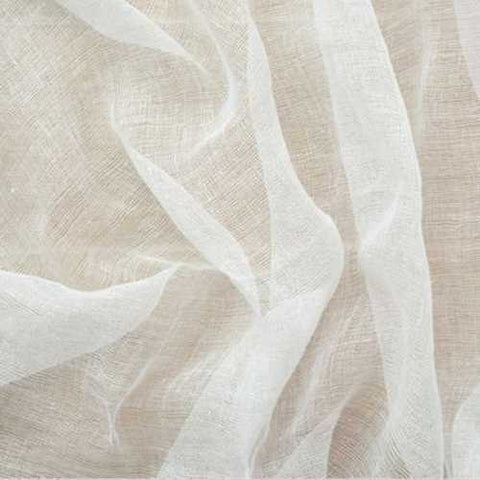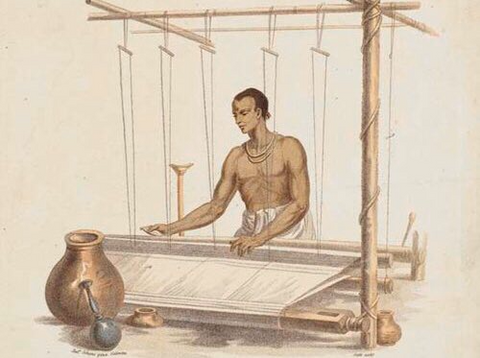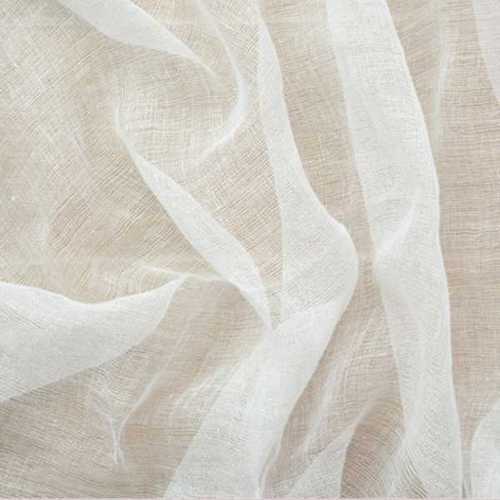
Muslin is a loosely constructed, plain weave fabric, woven in a variety of forms and weights. High quality muslins are created from fine, smooth, evenly spun thread, resulting in a soft, breathable fabric.

Muslin was once a valuable commodity and has been traded around the world throughout human history, dating back to ancient India. Known as a luxury fabric, muslin from ancient India was handwoven using extremely fine, hand-spun yarns. The material was first made and named in the city of Mosul, which is now in Iraq. During the 17th and 18th centuries, Mughal Dhaka was capital of the worldwide muslin production. Highly popular in 18th-century France, the desire for muslin eventually spread across much of the Western world. It was praised in the international market as "woven wind" and "wonder gossamer" and was as expensive as silk.

During British colonial rule in India and Bangladesh, muslin weavers were not treated well and were not permitted to weave muslin, while Europe took over muslin production, creating machine-woven substitutes. Gandhi, the leader of the Indian independence movement, started spinning yarn himself to make khadi, a type of muslin, to promote self-reliance and to peacefully resist British rule. 
Today, muslin is woven all over the globe and is used in a variety of ways. There are four main grades of muslin:

Gray Heron’s blankets are made of lightweight, buttery soft, breathable gauze, woven in India.
Interested in learning more?
The ancient fabric that no one knows how to make: https://www.bbc.com/future/article/20210316-the-legendary-fabric-that-no-one-knows-how-to-make
The history of muslin: https://savageuniversal.com/blog/history-of-muslin/

Sources:
https://www.masterclass.com/articles/fabric-101-what-is-muslin-how-to-use-and-care-for-muslin
https://www.britannica.com/topic/muslin
Watson, J. Forbes (John Forbes); India Museum; Great Britain. India Office, publisher; Eyre & Spottiswoode, printer (1866). The textile manufactures and the costumes of the people of India. Getty Research Institute.
Baden-Powell, Baden Henry (1872). Hand-book of the Manufactures & Arts of the Punjab: With a Combined Glossary & Index of Vernacular Trades & Technical Terms ... Forming Vol. Ii to the "Hand-book of the Economic Products of the Punjab" Prepared Under the Orders of Government. Punjab printing Company. p. 2.
Mukhopādhyāẏa, Trailokyanātha (1888). Art-manufactures of India: Specially Compiled for the Glasgow International Exhibition, 1888. Superintendent of Government Printing.
India Perspectives. Produced by PTI for the Ministry of External Affairs. 1998. p. 33.
"mulmul", The Free Dictionary, retrieved 26 November 2020
Polo, Marco. "The most noble and famous travels of Marco Polo, together with the travels of Nicoláo de' Conti". Translated by John Frampton, London, A. and C. Black, 1937, p.28.
Shamim, Shahid Hussain; Selim, Lala Rukh (2007), "Handloom Textiles", in Selim, Lala Rukh (ed.), Art and Crafts, Cultural survey of Bangladesh series, vol. 8, Asiatic Society of Bangladesh, p. 552, OCLC299379796
Eaton, Richard Maxwell (1996), The Rise of Islam and the Bengal Frontier, 1204–1760, University of California Press, p. 202, ISBN978-0-520-20507-9
Karim, Abdul (2012), "Muslin", in Islam, Sirajul; Jamal, Ahmed A. (eds.), Banglapedia: National Encyclopedia of Bangladesh (Second ed.), Asiatic Society of Bangladesh
Bolts, William (1772), Considerations on India affairs: particularly respecting the present state of Bengal and its dependencies Printed for J. Almon, pp. 194–195
Edwards, Michael (June 1976), Growth of the British Cotton Trade 1780–1815, Augustus M Kelley Pubs, p. 37, ISBN0-678-06775-9
Marshall, P. J. (1988), India and Indonesia during the Ancien Regime, E.J. Brill, p. 90, ISBN978-90-04-08365-3
Samuel, T. John (2013), Many avatars : challenges, achievements and the future, [S.l.]: Friesenpress, ISBN 978-1-4602-2893-7
https://www.indiamart.com/proddetail/muslin-fabric-20572032462.html
http://www.christies.com/LotFinder/lfsearch/LotDescription.aspx?intObjectId=4874871




